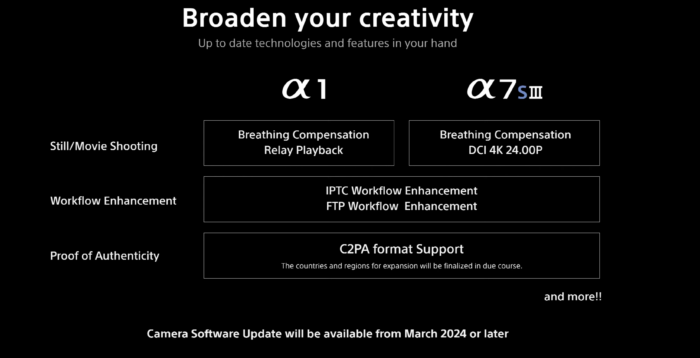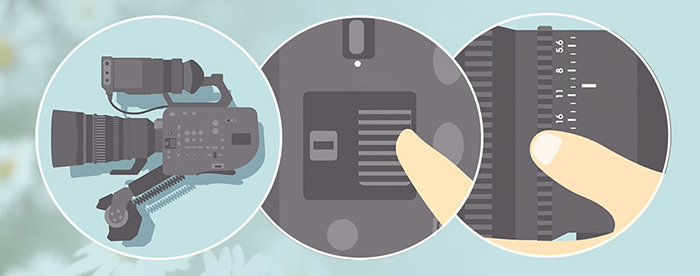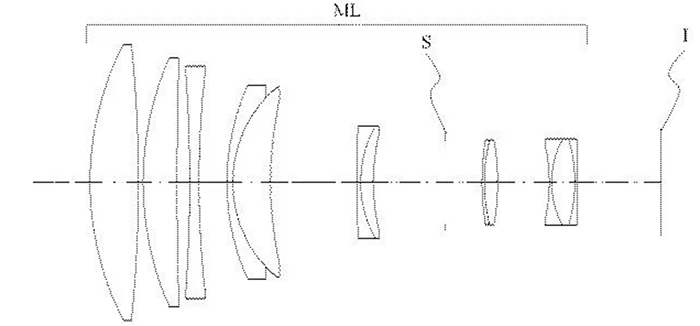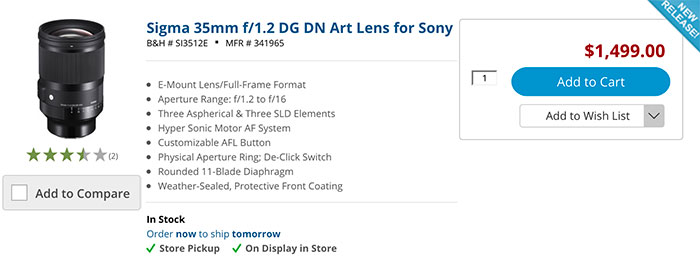Review of the Sony FE 16-35mm f/2.8 G Master Lens by Dylan Giannakopoulos
This is a guest post from Dylan Giannakopoulos. Original article at dylangiannaphotography.com.au
Review of the Sony FE 16-35mm f/2.8 G Master Lens
Reviewed by Dylan Giannakopoulos – 16th November 2017
The Sony Vario-Tessar T* FE 16-35mm f/4 ZA OSS Lens is by far my most frequently used lens and an overall favourite of mine, so when Sony announced the release of their FE 16-35mm f/2.8 G Master wide angle zoom lens, I was dying to get my hands on it for a comparison. For this review, I wanted to put less of a focus on pixel peeping and stress more about the aspects of the lens which I found to have a discernible impact on image quality and usability.
It was important for me to test the G Master in similar situations that I frequently use my Sony FE 16-35mm f/4 ZA in. On my recent trip to Beijing and Hong Kong, I left my 16-35mm f/4 ZA lens at home and took the 16-35mm f/2.8 G Master with me. I’ve done a lot of travelling with the f/4 ZA, so I knew this was going to be a perfect opportunity to see which lens I preferred.
Specification Break Down
• Focal Length: 16-35mm
• Aperture Range: f/2.8 to f/22
• Filter Diameter: 82mm
• Minimum Focus Distance: 0.28m
• Three Aspherical and Two XA (extreme aspherical) Elements
• Two Extra-Low Dispersion Elements
• Circular 11-blade aperture
• Fluorine and Nano AR Coating
• Dust and moisture resistant design
• Direct Drive Super Sonic Wave AF Motors
• Focus Hold Button
• AF/MF Switch
• Dimensions (DxL): 88.5mm x 121.6mm
• Weight 680g
Physical Aspects
The build quality on the Sony FE 16-35mm f/2.8 GM is fantastic and features the signature sleek and robust G Master design. As E-Mount users have come to expect with any lenses with a G Master badge, the construction is very impressive and features a dust and moisture resistant design, with a rubber gasket at the lens mount for a very snug and secure fit. The rubberised zoom ring has just the right amount of resistance and moves fluidly. Unfortunately, the same cannot be said about the focus ring. I typically shoot landscapes using manual focus, and I prefer my focus rings to have a reasonable amount of resistance to ensure precise focusing. I found the focus ring to be quite loose, and would’ve preferred it to have had a similar feel to the zoom ring. This comes down to personal preference but I do prefer the focus ring on the f/4 ZA lens.


16-35mm f/2.8 GM mounted on the Sony a7 II at Victoria Harbour – Hong Kong
Unlike its predecessor, the f/2.8 GM features a focus hold button which is reassignable, AF/MF selector and a petal shaped lens hood with a locking mechanism. This mechanism may be a subtle addition, but being able to quick and easily attach and detach the lens hood with minimal force and have it securely lock into place, is a useful feature which I wish Sony would introduce on all their lenses.
Side by Side Comparison of Sony FE 16-35mm f/4 ZA and 16-35mm f/2.8 G Master
The G Master is certainly not a compact lens and it is in fact bigger than the f/4 equivalent in every way. It does have a slight advantage over its nearest competition, the Canon EF 16-35 f/2.8L III USM lens, being 6mm shorter and weighing 110g less. In comparison to Nikons closest equivalent the Nikon AF-S NIKKOR 14-24mm f/2.8G ED Lens, the Sony GM is a staggering 320g lighter and 10.5mm shorter. The Nikon may offer a wider focal length but its bulbous front element makes using filters of any kind extremely difficult and in this respect, the Canon and Sony are clear winners. Looking at the two Sony lenses side by side, their size difference whilst being noticeable, is quite reasonable considering the extra stop in light gained. Through my travels, I didn’t find the G Master to be any less comfortable to handhold when attached to my Sony a7 II. The size difference only became noticeable when I was packing my ThinkTank Airport Commuter camera bag. The increase has pushed the G Master into a DSLR size class lens and I was surprised by how much I had to reconfigure my bag to accommodate for it.
Image Quality
If I had to sum this lens up in a single word it would be consistent. From past experience, I have found that the f/4 ZA’s sharpness and image quality declines the closer you get to 35mm and as a result, have been hesitant to use it in the 28-35mm range. Fortunately, this is not the case for the G Master. I was honestly blown away by how consistently well the lens performed throughout its entire focal length and aperture range, something which is extremely difficult to achieve in a zoom lens.
Straight out of Camera – ISO 640 | f/2.8 | 15s | 16mm
Wide open at f/2.8, the G Master is sharp and the transitions between in and out of focus are rendered smoothly. Bokeh is creamy and doesn’t detract from the focal point. I found the lens suffered from some vignetting when shooting wide open at 16mm but this is largely corrected by stopping down to f/5.6 or greater. The amount of vignetting also seemed to decrease the further you zoom in to 35mm. Similarly, there is a small amount of distortion present at 16mm but is easily corrected using a lens profile in post processing.
At the time of writing, DXO Mark released their findings on the lens and they supported my conclusions. The Sony 16-35mm f/2.8 G Master is not only an excellent well-rounded lens, which out performs its competition, but is noticeably sharper than the Sony FE 16-35mm f/4 ZA. These differences whilst being visible on 24 MP sensor, will only be further exacerbated on high resolution cameras such as the 42.4 MP a7 R III. When Sony first introduced their G Master line of lenses, they explained that these were designed not just for the cameras of today, but to measure up to the continuing evolution of camera bodies and high resolution sensors of tomorrow. This focus on resolution and ‘future proofing’ is clearly evident within the design and manufacturing of this lens. I’m glad to see Sony is upholding that vision.
Straight out of Camera – 100% Crop
ISO 800 | f/2.8 | 1/60s – Shot at 16mm
ISO 100 | f/11 | 91s – Shot at 16mm
ISO 100 | f/9 | 1/40s – Shot at 24mm
ISO 100 | f/8 | 4s – Shot at 30mm
ISO 100 | f/8 | 1/100s – Shot at 35mm
Which of the two would I recommend?
My recommendation is heavily dependent on what the photographer prioritises. Putting the cost of each lens aside, the Sony FE 16-35mm f/4 ZA is best suited to the photographer who needs a full frame wide angle zoom but requires a compact solution. This is a fantastic lens and for those who have to priorities size & weight, this is the lens I would recommend. The Sony FE 16-35mm f/2.8 GM on the other hand is for the photographer who requires the best image quality possible above all else and or/ needs the extra stop of light. Whether you’re a wedding photographer looking to complete the holy trinity of lenses or a working professional, you simply can’t go past the G Master.
Pro’s & Con’s
Pro’s
• Class leading image quality
• Great sharpness wide open
• Well-built and features weather sealing
• Fast maximum aperture of f/2.8 Con’s
• Focus ring is a bit loose
• Retail price $3,699 AUD
Con’s
• Focus ring is a bit loose
• Retail price $3,699 AUD
Final Thoughts
After traveling half way across the globe with this lens, I have to say that I’ve been blown away by its performance. This is truly a no comprise lens, which is reflective in both its build and image quality.
I would like to thank Sony Australia for providing me the opportunity to review this lens. I would like to clarify that I am in no way affiliated with and/or received any compensation from Sony in exchange for this review. All of the comments and opinions expressed in this review are unbiased and are of my own.
**This post contains affiliate links to eBay and I will be compensated if you make a purchase after clicking through my links. As an eBay Associate I earn from qualifying purchases


































